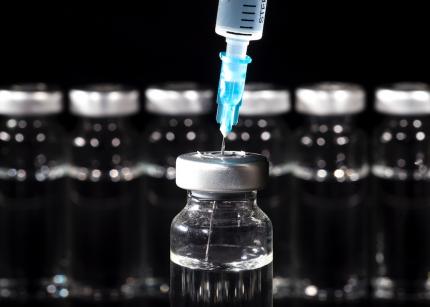Insider Controversy

Victoria Felkar is an instructor and internationally renowned junior scholar completing doctoral studies at the University of British Columbia. She is a social and cultural sport historian with a special interest in physical culture, medical and criminological knowledge, performance enhancement, and her research has achieved international publication and award. Victoria’s background in exercise physiology and biomedicine has provided the perfect platform for her pioneering work in the critical study of social ethics, hormonal manipulation and performance enhancing technologies. Outside of her studies Victoria is the owner and operator of a successful independent fitness consulting firm – working with top level athletes and various organizations within the health and fitness industry.

SARMs In Bodybuilding
Have you ever heard the story of the golden goose? It’s an old incredibly old fable—literally about a goose that one day laid a golden egg. Rather than waiting to see if the goose would lay another golden egg, its impatient owner, who wanted all of the gold immediately, killed it.
While on the surface, it may not seem like anything but a foolish children’s tale, the golden goose serves as a rather vivid warning that “greed loses all by striving all to gain.”
ou’d probably never guess but there’s a similar story behind the mythical substance known as SARMs. Since the late 1990s, these revolutionary drugs have been regarded by many as the next big-pharma ticket item. However, in recent years within the fitness industry, SARMs have gained a cult-like following as a magical anabolic substance. Outlandish claims, together with the exploitation of pharmaceutical patents, abuse of legal loopholes, and booming black-market business, have the potential to destroy SARMs before they can even turn a legitimate profit or be used to treat some of the most vulnerable clinical populations.
What exactly are SARMs? Believe it or not, that’s not actually the simplest question to answer. For the purposes of this article, we’ll be looking at a new class of nonsteroidal “selective androgen receptor modulators” that fall under the popular umbrella name of SARMs.
Before we go any further, let me clarify something about SARMs—they are drugs. They have medical, ethical, and legal implications associated with them, and yet most recreational users probably don’t have a clue what they are or how they work. To be honest, with so much misinformation about them out there, I can’t entirely blame them for that either.

However, unlike many other popular fitness articles about these drugs, you won’t get any advice on how to take SARMs here. Not only would that be totally unethical and illegal, but in my opinion, the trend of the blind leading the blind has only fueled SARMs becoming worshiped by bro-pharmacists and guru-prep coaches.
SARMs are a recent discovery. In fact, they haven’t even been a “thing” for 20 years. So, don’t let the fact that until a couple years ago you could readily and legally purchase SARMs from various American pseudo-supplement retailers fool you about their effectiveness, safety, or purity. As it stands, there’s a lot still to be uncovered about the newest kid on the anabolic block.
With so much bad, incorrect, and misleading information on SARMs, we’ve literally got to start at the very beginning. Let’s talk about androgens.
Laying Anabolic Gold
Androgens, we’ve all got them.
Even though they’re dubbed a “male” hormone, we all produce varying degrees of androgens naturally. As an essential sex hormone, this process occurs at different locations within the body, including the ovaries and/or testes, adrenal glands, and fat cells. While there are different types of androgens, each of them are steroidal compounds—little chemical messengers that share a special kind of four-ringed molecular structure.
These messages are delivered inside specific cells known as androgen receptors. As a member of the steroid receptor superfamily, the androgen receptor is an incredibly important target for numerous pharmaceutical interventions, including, for example, cases of androgen deficiency, osteoporosis, and muscle wasting.
A host of different drugs have been created to interact with the androgen receptor in order to elicit various androgenic or anti-androgenic effects. These are known as “androgen receptor ligands” and typically are thought of as causing either androgenic results (“agonists”) or anti-androgenic results (“antagonists”).
The easiest way to understand of this process is to think of the good ol’ lock and key analogy—only certain keys can unlock certain doors.
You’ve got a house that has a front door, back door, side door, and a door that provides entrance to a basement suite. In this analogy, you have a master key—a skeleton key of sorts that can open all four doors. This “key” represents substances such as testosterone and other anabolic-androgenic steroids. These drugs “unlock” androgenic receptors, resulting in various androgenic effects. What happens if you only want to provide limited entrance to your house through just the basement door?

Well, you can now do that too, with the help of SARMs. In fact, the ability to “unlock” only selective androgen receptors” was the main reason behind SARMs’ development in the first place! In doing so, researchers believed that they would be able to minimize the undesirable side effects normally associated with anabolic-androgenic steroids, while still being able to exploit the desirable ones—i.e., the gains—and make it happen by only needing to swallow a pill only once a day. Sound almost too good to be true, right?
It took a few decades, a lot of money, and many failed experiments, but by the late 1990s, pharmaceutical companies believed they finally had the perfect oral-anabolic drug for use in clinical populations. Developing a nonsteroidal substance that could do the job of a steroid by acting on an androgen receptor site while having little side effects, being easily dosed, and having low side effects but high anabolic benefits was by no means an easy feat.
How exactly do you create a substance that can act on androgen receptors and provide all the tuff with none of the fluff? Completely change the way it looks. Let’s go back to our house analogy—is there a way to unlock a door without having the key? Sure, grab yourself a hairpin and pick the lock. Now, if you’ve ever tried picking a lock with a hairpin, then you’ll know it’s an skill that requires mastery. It’s not impossible to do, if you have the right combinations.
Do a hairpin and a key look anything alike? Heck no. And neither do steroids and SARMs. Steroids have a signature cholesterol-based chemical structure, but, just by their nature of being a nonsteroidal compound, SARMs don’t. In fact, there are eight different chemical structures, or “scaffolds,” that make up this family of compounds. And yes, each one of these has a host of different SARMs nested within it. Unlike steroids, SARMs can’t metabolized into dihydrotestosterone (DHT) or aromatize to estrogen, which means there shouldn’t be the same side effects such as male pattern hair loss or gynecomastia.
I know what you’re probably thinking. SARMs still sound like a pretty golden product to try. I mean, come on—you get gains and glory! You may want to think twice about that.

The Duck Test
Have you ever heard of the duck test? “If it looks like a duck, swims like a duck, and quacks like a duck, then it probably is a duck.”
SARMs many not “look” structurally like steroids, yet they share many of the same risks associated with AAS use.
First and foremost, there are a lot of myths surrounding these substances. Although many believe that SARMs are some utopian 100 percent anabolic drug, that’s not the case. They also have side androgenic properties too … actually, scratch that. SARMs and oral anabolic steroids have nearly the same side-effect profile, causing things such as the rapid breakdown of levels of high-density lipoprotein cholesterol (HDL, the good stuff) and rise in liver enzymes due to inflammation. While it’s possible that using an injectable form of SARMs could rectify these, the reality is that probably won’t be manufactured anytime soon. Remember, these drugs were almost exclusively designed for oral use in therapeutic populations.
Also, keep in mind that many of SARMs’ side effects are exaggerated by taking “higher than suggested dosages”—which we all know the athletic population loves to do. Clinical studies on SARMs have only been done in vitro, isolated cells or in either animal studies (i.e., on rats), or on the sick and old in clinical population settings. They haven’t been tested on healthy, young active males and females. The doses within the research on SARMs are significantly lower than those required for performance enhancing effects—and even those lower dosages have been seen to result in side effects!
Furthermore, let me remind you that SARMs are the new kid on the anabolic block! If after over 75 years we don’t know the full extent of AAS side effects, how in the heck can we know the health consequences of SARMs use?
Not only that, but new forms of these drugs are being created regularly. Currently pharmaceutical companies are testing “second-generation” non-steroidal SARMs—leaving an entire flock of first-generation SARMs behind. Why is that? Simple—they didn’t work. Plus, first-gen SARMs had far too many side effects to ever get the “stamp of approval” required for use. No stamp of approval means no profit for drug companies. And so, first gen-SARMs got scrapped by the pharmaceutical world.
But you know what they say: “One man’s trash is another man’s treasure.”
Killing the Goose

First-gen SARMs being hailed as useless and dangerous hasn’t stopped the fitness industry’s serial snake-oil supplement gurus from manufacturing, propagating, and making millions off their sale. What’s worse is that this is just one of many shortcomings associated with mainstream SARMs use.
The propaganda surrounding SARMs are plentiful. Most of it is nothing more than a myth, holding only a small fragment of reality. For example, SARMs do build muscle. In some of the early studies on first-gen SARMs, there were “modest gains” in lean mass—1.0 to 1.5 kilograms over the course of four to six weeks. But here’s the kicker—studies on injectable testosterone resulted in 5 to 7 kilograms of lean mass gains over the same period. Plus, the modest SARMs gains came with nasty side effects!
If you’re familiar with SARMs, you’ve probably noticed that many of them have code names, usually made from a combination of letters followed by numbers. The reason for this is rather simple: SARMs are patented products that haven’t been approved for use, and are either still in—or never made it out of—trial phases. They are experimental drugs that haven’t been offered for commercial sale by legitimate companies. Nevertheless, that hasn’t stopped the World Anti-Doping Agency (WADA) or recent law changes from tightening the iron anti-doping grip on the sale and use of SARMs.
In early 2008, SARMs were added to WADA’s prohibited list, becoming one of the many substances banned for use in athletic competition. However, in terms of mainstream use, they continued to fly under the radar for quite some time. By May 2016, the FDA reportedly began exploring complaints that specific SARMs were being marketed and sold by supplement companies.
Selling them under the guise of “dietary supplements,” these companies thought that they could get away with it too! But there are a few different legal issues here; under US federal law, dietary supplements can’t include a substance that’s being investigated as a new drug, which, as you know, SARMs most definitely are! There’s been recent (and growing numbers of) reports discussing SARMs being found in products in which they shouldn’t have been included. Yes, that’s a “buyer beware”—tainted supplements do exist! Furthermore, as I mentioned earlier, SARMs are patented; that means any company manufacturing them without the consent of the founding pharmaceutical company is doing so illegally. While it’s known that at least one pharmaceutical company has begun sending cease-and-desist letters to stop the illegal manufacture of a specific SARM, numerous other SARMs remain still readily available for purchase.
So how did supplement companies get away with selling them for so long? Through the lovely legal loophole known as “research chemicals.” Discussing it is out of the scope of this article, but I’ll say this: At this time, SARMs are not available for resale under any circumstances in both the United States and Canada. Yes, Canada too … contrary to popular belief, SARMs aren’t licensed or permitted for medical or therapeutic use here either. If you doubt this, just take a look at the numerous cases against athletes who have been caught using SARMs through the Sport Dispute Resolution Center of Canada.
There are also major questions being raised about the purity of SARMs currently being sold. Sounds a lot like those backyard black market labs who are making dirty gear. They’re now also in the SARMs game too. Underground SARMs that have been tested by academic researchers found that instead of containing a pharmaceutical-grade drug as claimed, the reality is that the products were more like a D.I.Y. disaster, containing at least 15 percent impurities.
Thought to be the “future of androgen therapy,” SARMs were truly believed to be an alternative to steroids—a utopian drug that would revolutionize the pharmacological world. Well, guess what? It’s been nearly 20 years since their inception, and we still haven’t seen an approved drug in this category yet.
That hasn’t stopped researchers from continuing to develop new SARMs at an astronomical pace. Newer generation SARMs may one day fulfill the anabolic dream of providing anabolic gains without side effects. Both inside and out of the laboratory, the use of SARMs still comes with very real health risks.
Golden goose? I don’t think so. For now, SARMs appear to be nothing more than a sitting duck.
Instagram: @VictoriaFelkar
Twitter: @VictoriaFelkar
Facebook: Victoria Felkar

